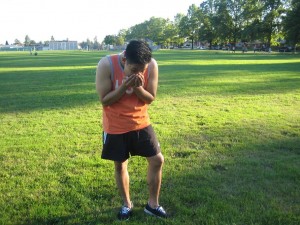It is a known fact that allergies to the fungus Cladosporium can cause heath symptoms all year round. Just like with other molds, Cladosporium can grow in both outdoor and indoor environments. The different strains are some of the most allergenic species of molds.
It is important to note that the growths of Cladosporium typically appear brown, green or black in color. When they are outdoors, they usually grow on plant matter and generate reproductive spores. When indoors, they thrive in moist surfaces and eventually infest the indoor air with spores. Once these particles are inhaled, it can trigger an allergic reaction among those who are allergic to molds.
Take note that the dispersed fungi could not be seen unless a microscope is used, but can be detected by their distinctive smell. Once the colonies of Cladosporium grow large enough, they become apparent as dark-colored spots in wet areas such as windows with condensation or in bathroom shower stalls. Always remember that all fungal growths inside the house can affect the quality of air. Those who suspect mold allergies as the culprit for causing health problems should undergo proper testing for the presence of Cladosporium antibodies.

When an allergy to Cladosporium strikes
Allergic reactions are likely to occur due to outdoor exposure to Cladosporium while mowing the lawn, gardening or raking leaves. The levels of mold in the outdoor air usually change with the season and weather. These airborne particles are higher in amount after it rains and the level drops after frost.
The quality of the indoor air depends on the reproductive cycle and how often the moldy areas are cleaned. Individuals who suffer from perennial health symptoms should strictly observe mold prevention measures on a regular basis. If you want to learn more on how to properly manage an allergic reaction, click here.
What are the symptoms of an allergy to Cladosporium?
An allergic reaction to indoor or outdoor Cladosporium has the similar symptoms. The individual can experience watery and itchy eyes, sinus congestion, runny nose and sneezing. Those who have asthma can suffer from abrupt tightness in the chest, difficulty breathing and wheezing.
Preventive measures
Those who have an allergy to Cladosporium can prevent an allergic response from developing. Initially, yard chores must be delegated to other members of the household or the individual can use a filter mask to prevent the respiratory symptoms. When indoors, the individual should eliminate all visible molds and maintain the humidity of the air below 50 percent.
Perennial and seasonal allergies can be managed but not completely cured. Decongestants and over-the-counter antihistamines can help deal with occasional allergic reactions. For perennial mold allergies, nasal corticosteroids are highly recommended. These medications can be taken continuously in order to provide relief from the symptoms. Those who are prone to severe allergies to mold should undergo immunotherapy which involves a series of allergy shots that minimize the sensitivity to Cladosporium and other mold allergens.
